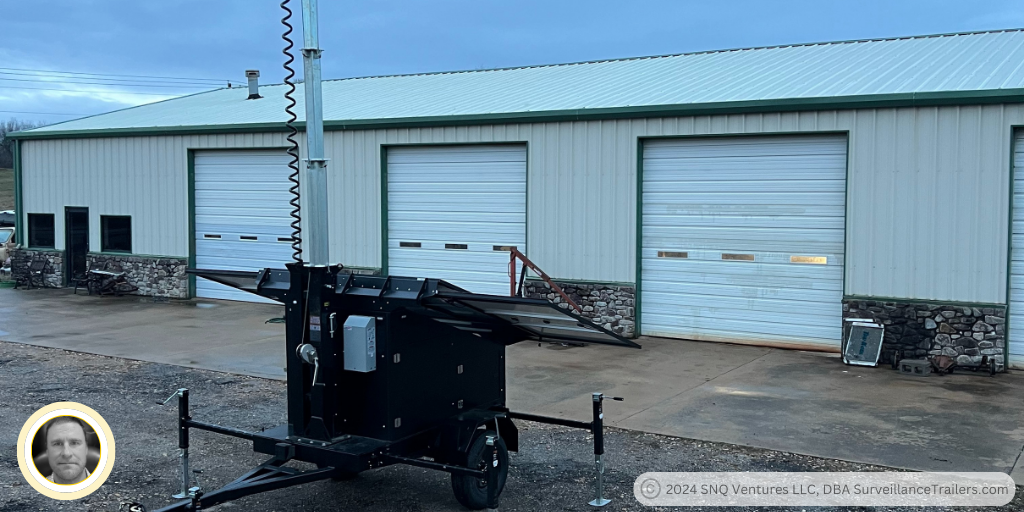Understanding How Solar Powered Surveillance Trailers Work

Key Takeaways
- Solar powered surveillance trailers are eco-friendly and cost-effective solutions for remote security needs.
- The key components include solar panels, inverters, charge controllers, batteries, and wiring systems.
- These trailers offer versatility, mobility, and reliability, making them ideal for various applications such as construction sites, parking lots, and remote locations.
Mounting Solar Panels on the Trailer

Mounting solar panels on your surveillance trailer is a crucial step in setting up an efficient solar-powered system. Let's break it down into three main parts: choosing the right panels, the mounting process, and ensuring everything is sealed and weatherproofed.
Key Components Inside a Solar Powered Surveillance Trailer
Alright, let's dive into the heart of a solar powered surveillance trailer. These trailers are packed with tech that makes them super efficient and reliable. Here's a breakdown of the key components you'll find inside.
Inverters and Charge Controllers
First up, we have the inverters and charge controllers. These are crucial for converting the solar energy captured by the panels into usable electricity. The inverter changes the direct current (DC) from the solar panels into alternating current (AC), which is what most of your devices use. The charge controller, on the other hand, regulates the voltage and current coming from the solar panels to the batteries, ensuring they don't overcharge.
Battery Systems
Next, let's talk about the battery systems. These are the backbone of your trailer's power supply. They store the energy generated by the solar panels so you can use it even when the sun isn't shining. Most trailers use lithium-ion batteries because they're lightweight, have a long lifespan, and can handle high vibration environments.
Wiring and Connections
Finally, we have the wiring and connections. This might not sound exciting, but it's super important. Proper wiring ensures that all the components in your trailer are connected efficiently and safely. You'll need to follow a solar guide to connect the charge controller and inverter to the battery correctly. This step-by-step installation guide is essential for setting up an off-grid surveillance trailer system.
Remember, the importance of solar power for surveillance trailers can't be overstated. It provides a reliable, eco-friendly power source that keeps your equipment running smoothly, even in remote locations.
How Solar Powered Surveillance Trailers Operate
Energy Generation and Storage
Solar powered surveillance trailers harness sunlight to generate electricity, which is then stored in internal batteries. These batteries ensure the system can operate even during periods of zero sunlight. A well-designed system can provide a minimum of 10 days of power autonomy, making it highly reliable for extended use.
Remote Monitoring Capabilities
One of the coolest features is the ability to access the video feed remotely. Thanks to cellular connectivity, you can view real-time or archived footage directly from your phone or laptop. This means you can keep an eye on things no matter where you are.
Maintenance and Troubleshooting
Maintaining a solar powered surveillance trailer is relatively straightforward. Regularly check the solar panels for dirt and debris, and ensure the batteries are functioning properly. If you encounter any issues, most systems come with user-friendly software for troubleshooting.
Keeping your solar panels clean and your batteries in good shape will ensure your trailer runs smoothly for years to come.
Benefits of Using Solar Powered Surveillance Trailers

Eco-Friendly and Cost-Effective
One of the standout benefits of solar-powered surveillance trailers is their eco-friendly nature. By harnessing solar energy, these trailers significantly reduce carbon footprints, making them a green alternative to traditional surveillance systems. Plus, they save on energy costs, as they don't rely on external power sources.
Versatility and Mobility
Solar surveillance trailers are incredibly versatile and can be deployed in various environments, from construction sites to remote areas. Their mobility allows for rapid deployment and repositioning, ensuring that you can always have surveillance where you need it most.
Reliability in Remote Locations
These trailers are perfect for off-grid deployment, providing reliable surveillance in areas without access to traditional power sources. This makes them ideal for remote locations where other surveillance options might fail.
Discover the environmental benefits of using solar surveillance trailers and how they balance a reduced carbon footprint with long-term cost savings.
Frequently Asked Questions
How do solar-powered surveillance trailers work?
Solar-powered surveillance trailers use solar panels to convert sunlight into electrical energy, which is then stored in batteries. This stored energy powers the surveillance equipment, including cameras and remote connectivity devices. The video feed can usually be accessed remotely via cellular connectivity, allowing users to view real-time or archived footage from their phones or laptops.
Can solar-powered surveillance trailers operate without sunlight?
Yes, solar-powered surveillance trailers can operate without direct sunlight for a limited period. They rely on the energy stored in their batteries. Depending on the size and capacity of the batteries, these trailers can function for several days without sunlight. For example, some models can deliver a minimum of 10 days of power autonomy in the absence of direct sunlight.
What are the benefits of using solar-powered surveillance trailers?
Solar-powered surveillance trailers offer several benefits, including being eco-friendly and cost-effective, versatile and mobile, and highly reliable in remote locations. They eliminate the need for on-site electricity hookups or generators, making them ideal for temporary security, targeted surveillance, off-grid deployment, and low-maintenance requirements.

